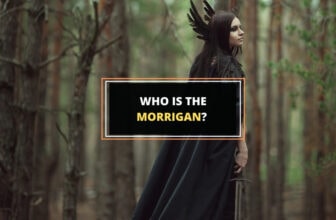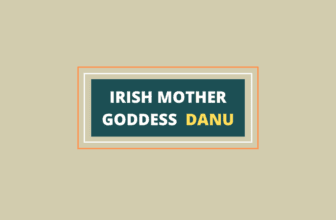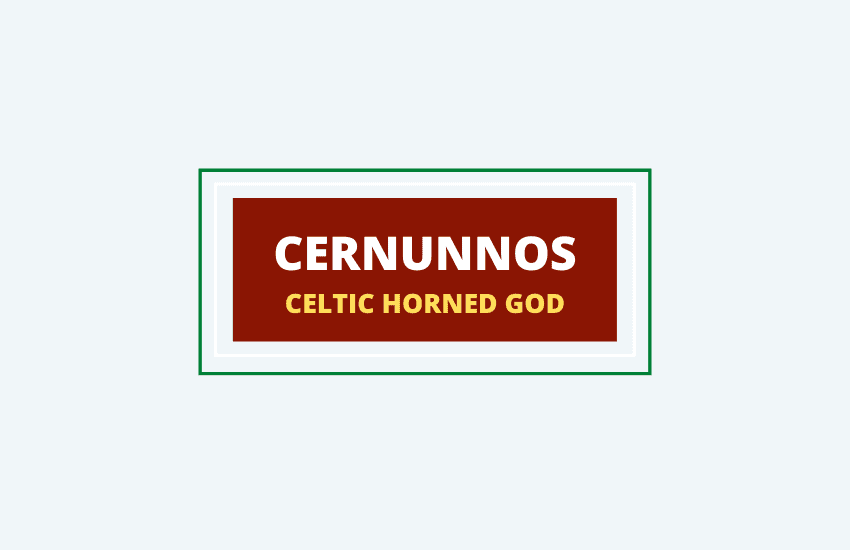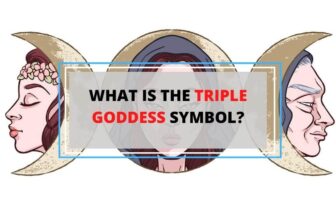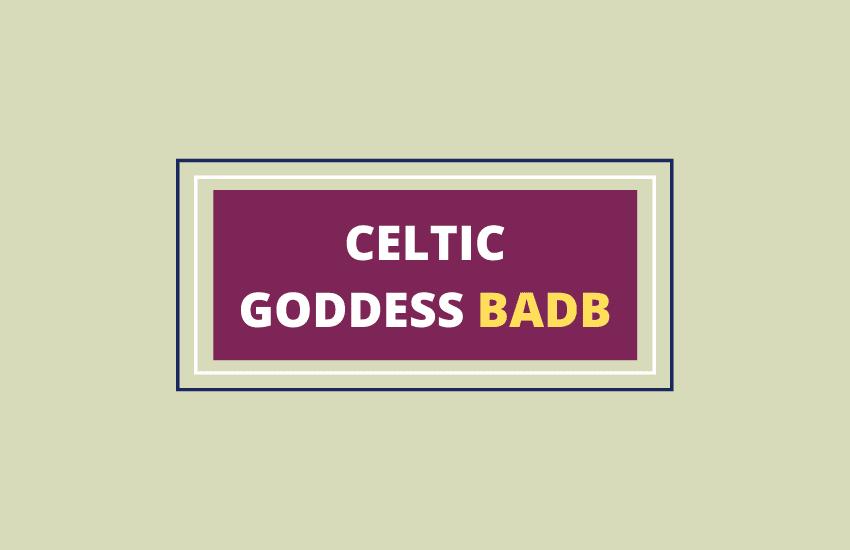
Table of Contents
In Celtic mythology, Badb, also known as Battle Crow or Death-Bringer, was the goddess of death and war, creating confusion and fear on battlefields in favor of the victors. She was one aspect of the Celtic triple goddess of war, death, and prophecy, called the Morrigan.
Badb and the Morrigan
In Irish mythology, the Morrigan was the triple goddess of death, war, battle, fate, and prophecy, and appears in several different guises. The Morrigan refers to three sisters: Badb, Macha, and Anu. They are sometimes called The Three Morrigna.
Badb is considered to be the old woman or the crone of the trio. Still, some believe that the Morrigan doesn’t consist of the general triple goddess’ aspects – the maiden, the crone, and the mother – but rather of three goddesses equal in power.
Badb is an old Irish word, meaning crow or the one who boils. Sometimes, she’s referred to as Badb Catha, which means Battle Crow. Often appearing as a woman who is older than her sisters, many scholars attributed the role of the crone to her. She was said to take the shape of a crow during battlefield and create confusion with her fearsome cries. By creating chaos and disorienting the enemy soldiers, she would ensure the victory of the army she favored.
Although the Morrigan was considered predominantly the goddess of war and the dead, she was, most of all, the goddess of sovereignty, and Badb, Macha, and Anu all had their roles in assigning or revoking power and authority.
According to the old Irish legend, called Bean Sidhe or Banshee, which means fairy, Badb left the battlefield and war behind her and became a faery, watching over certain families and foretelling the deaths of their members with her mournful shrieks and wails.
Badb’s Most Significant Myths
According to some legends, Badb’s mother was the goddess of agriculture, called Ernmas, but her father is unknown. Others claim that her father was the druid, Cailitin, who was married to a mortal. As for her husband, some myths claim she was married to the god of war, Neit; others suggest her husband was the Dagda, or the Good God in Celtic mythology, whom she shared with her sisters.
Together with her sisters, Badb played an important role in several different Irish myths, most prominently featuring in The First and the Second Battle of Magh Turied.
Badb in The Battles of Magh Tuired
In ancient Ireland, Tuatha dé Danann, or the Children of Danu, tried to invade the Emerald Island. They struggled with these efforts as they had to fight the Fomorians for control over the lands. However, the Fomorians weren’t the only obstacle in this endeavor. There was a minor conflict between Tuatha dé Danann and Fir Bolg, the Men of Bags, who were the Emerald Isle’s original inhabitants.
This conflict resulted in The First Battle of Magh Turied. Badb, together with her sisters, came to the battlefield to aid the Children of Danu, by creating a confusing mist and instilling fear and terror among the Fig Bolg’s troops. They managed to break the enemy, leading to the victory of Tuatha dé Danann.
Facing the Second Battle of Magh Turied against the Fomorians, the Dagda asked the Morrigan for help on Samhain, the Celtic festival celebrating winter. The goddess foretold Tuatha dé Danann’s victory. On the day of the battle, the Morrigan once again caused a mass distraction with her ghastly shrieks. The goddesses screamed terrifying prophecies, scaring the Fomorians who retreated into the sea.
Badb in the Destruction of Da Choca’s Hostel
In this story, Badb appears two times, prophesying the death of the hero Cormac. During the war against the Connachta, Cormac and his party were on their way to Da Choca’s hostel to spend a night. While resting on a riverbank, they encountered an older woman washing bloody clothes at the river’s edge. When asked whose clothes she was washing, she answered that it was the bloody clothes of a king who would perish. She was foretelling Cormac’s death.
Once they reached the hostel, Badb appeared again, as a pale woman with white hair, dressed in red. Her appearance was as dark as her prophecies. That night, the Connachta took the hostel under siege, killing Cormac. Nobody was spared, and both armies suffered great losses.
Badb and Her Cauldron of Rebirth
Badb’s name could also be translated as the one who boils, referring to her tending over the magical cauldron in the Otherworld. The ancient Celts believed that Badb and her sister Macha would turn into crows and eat the fallen soldiers’ flesh. In their bellies, they would carry their souls into the Otherworld, where they would meet Badb as a kind old crone stirring the large cauldron.
She would then ask them if they wanted to stay in the Otherworld or be reborn. Once they chose the latter, they would have to climb into the magical cauldron. Badb would take a glimpse into the boiling water and see a new baby being born or an animal with cubs. Since Celts believed in transmigration, the souls could be reborn as either animal or human.
Depiction and Symbolism of Badb
In her myths and tales, Badb sometimes appears as a young woman and other times as an older woman. Together with her two sisters, she’s most commonly associated with war, battle, destruction, fate, and prophecy. Thanks to her distinct appearance and roles in various myths, the goddess has been attributed numerous symbolic meanings. Let’s break down some of those:
Badb’s Appearance and Colors
Even though the goddess is sometimes portrayed as a young woman, she often represents the crone aspect of the triple goddess Morrigan. Therefore, more often than not, she’s depicted as an old woman with ghastly pale skin and white hair. Dressed in red, she would stand on one foot and have one of her eyes closed. In Celtic tradition, both red and white were seen as omens of death. With only one foot touching the ground, she represented the connection between the realm of the living and the spirit’s world.
Badb’s Sacred Animals
During battles, Badb would often assume the form of a crow, whose horrifying screams instilled fear in the enemy soldiers’ bones. For this reason, the crow is often associated with battles, war, and deathin Irish mythology. Badb was also associated with wolves, representingguidance and transformation.
To Wrap Up
Although Badb symbolizes war, death, and the horrors of a battle, the goddess isn’t only associated with bloodshed but also with prophecy, strategy, and protection. As a harbinger of death, she’s known by many names, including The Washer at the Ford, Battle Crow, and Scald-Crow.
Still, her role in Irish mythology stretches far beyond death itself. As a medium between the two worlds, she brings an end to a current mortal condition, but at the same time, she offers the promise of a new beginning.




